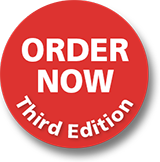Chapter 4 – Children’s literature
Chapter Summary
Teachers and parents can read books aloud that are beyond what children can read independently. Reading aloud builds children’s enjoyment of books, literary language, vocabulary and knowledge about how to read. The language in books may be highly decontextualised or removed from the here and now and this is different from spoken language. Good picture books have several features that all work together to be effective. The characters, plot, setting, point of view, illustrations and format must capture children’s interest and imagination. The visual techniques used in the illustrations can be analysed for colour, texture, line, perspective, design and point of view. Storytelling is a more intimate way of engaging children with story and this, combined with props such as puppets, toys and other dramatic artefacts, helps build children’s love of language. Award-winning books can be explored as well as books by favourite authors. If a child hears a book read each day, by the age of 5 they will have heard 1825 stories.
Study Questions
Main ideas
What is the definition of children’s literature?
Use a picture book or a folktale that has the hero cycle. Explain how the hero cycle works and draw a diagram of the events that occur in the book or folktale.
How are artistic devices (colour, point of view) used in the picture book you have chosen to work with?
Application to a developmental stage
Choose a children’s book and use the criteria in Figure 4.4 to evaluate it. What did you find? Did the book fit all the criteria?
Diverse learners
Think about critical literacy and diverse learners. Take a picture book and try out the following points about critical literacy:
- Examine the meaning within the text.
- Consider the purpose for the text and the author’s motives.
- Understand that texts are not neutral; that they represent particular views, silence other points of view and influence people’s ideas.
- Question and challenge the ways in which the text has been constructed.
- Analyse the power of language.
- Think about how the text could have different meanings based on gender.
Teaching plans
Suggest a unit of work based on the picture book you have chosen.

